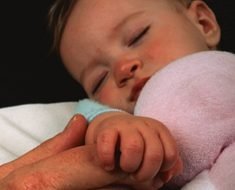A new study conducted by the Center for Injury Research and Policy and the Central Ohio Poison Center at Nationwide Children’s Hospital found that there were more than 156,000 calls to US Poison Control Centers regarding exposures to attention-deficit hyperactivity disorder (ADHD) medications among children and adolescents 19 years of age and younger from January 2000 through December 2014, averaging 200 calls each week or 29 calls per day.
The study, published online today in the journal Pediatrics, found that while the number of calls about ADHD medication exposures among children and adolescents fluctuated throughout the years of the study there was on overall increase of 61% during the study period. The increase in calls coincided with an increase in ADHD diagnoses and medication prescriptions during the same time period nationally.
“Pediatric exposures to ADHD medications are an increasing problem in the US, affecting children of all ages,” said Gary Smith, MD, DrPH, the senior author of the study and director of the Center for Injury Research and Policy at Nationwide Children’s Hospital. “We need to do more to prevent these esposures.”
The majority of calls were about children 12 years of age and younger (76%). Among children younger than 6 years old, most exposures were associated with the exploratory behavior seen in that age group, for example, accessing improperly stored medications. Exposures among children 6-12 years were most often associated with therapeutic errors, such as taking or being given too much medication, a dose too soon after the previous dose, or the wrong medicine. Among teenagers (13-19 years), about half of reported exposures were intentional abuse/misuse or suspected suicide attempt. As a result, the exposures in this age group were more likely to lead to serious outcomes than those among younger children.
“In young children, it is exploratory behavior and access to the medication bottle, while in school age children it is usually the busy family schedule and a double-dosing medication error,” said Rick Spiller, co-author and director of the Central Ohio Poison Center at Nationwide Children’s Hospital. “In adolescents it tends to be an intentional exposure. The strategies to prevent these events change as the child gets older, but the risks of a problem remain.”
Overall, most (about 60%) of exposed individuals did not receive treatment in a health care facility, and about 25% were treated/evaluated and released. About 6% were admitted to a hospital for medical treatment and there were 3 deaths. While only about 28% of exposure calls had clinical effects reported, the most common clinical effects were agitation/irritability (11%), rapid heart rate (10%), drowsiness/lethargy (3%), high blood pressure (3%), and vomiting (2%). Methylphenidate and amphetamine medications each accounted for about 45% of exposures.
Source: Read Full Article





